Hariri Pontarini Architects
Set within the Andean foothills, just beyond Santiago, Chile, the Bahá’í Temple of South America is a domed, luminous structure that echoes the rolling topography of the mountains and uses light for its spiritual and design inspiration.
Its nine monumental glass veils frame an open and accessible worship space where up to 600 visitors can be accommodated. Looking up to the central oculus at the apex of the dome, visitors will experience a mesmerizing transfer of light from the exterior of cast glass to an interior of translucent marble. At sunset, the light captured within the dome shifts from white to silver to ochre, and purple.
Fourteen years in the making, the house of worship represents the last of the eight continental temples commissioned by the Bahá’í Community.
The site is located in a highly seismic zone. Consequently, the structural design of the temple had to support the complex building shape and also be able to withstand extreme earthquakes, wind, and weather.
The super-structures of the wings are comprised of hundreds of unique, individually engineered slim-profile steel members and nodal connections. Each of the wings rests on concrete rings and columns on elastomeric seismic isolators, so that in the event of an earthquake, the concrete pads slide horizontally to absorb the shock.
An intensive investigation into the material qualities that capture and transform light as it passes through, resulted in the development of two fully realized cladding materials: an exterior layer consisting of cast-glass panels developed solely for the project, and an interior layer composed of an exceptionally translucent marble from Portugal.
The research for the cast-glass exterior cladding took nearly four years, working in collaboration with artisans at Jeff Goodman Studio in Toronto. A remarkable 21,129 unique pieces of both flat and curved cast-glass pieces were produced to create each of the nine wings.
The innovative materials merge the old-world materiality of cast glass, carved stone, wood, and bronze, with advanced digital fabrication techniques. The touch of the artisan with the precision of the digital machine.
Pre-fabricated pieces for the structure and cladding of the building—made with the aid of advanced three-dimensional surveying technology—were shipped from multiple countries and then assembled on site in Santiago.
The sophisticated use of BIM to coordinated a host of consultants from the design phase through to construction ensuring that a complex form was able to come together without interference between trades as everything was updated on a single 3D model at site meetings.
The advanced use of technology, including CATIA, has pushed the boundaries of the complexity buildings that can be designed and ensure that they can be built at reasonable costs.





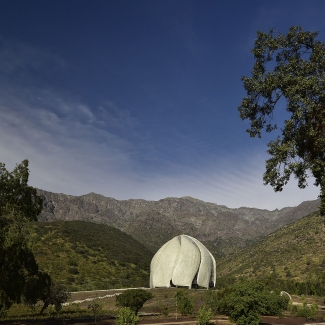
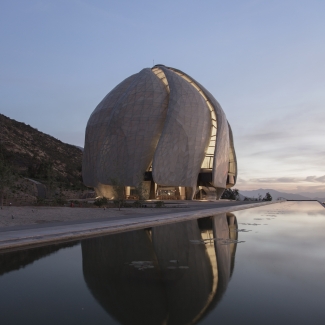
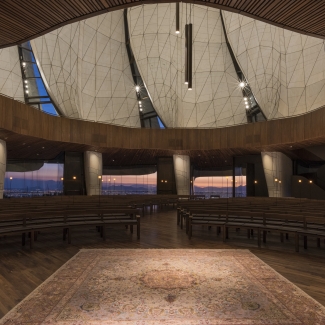
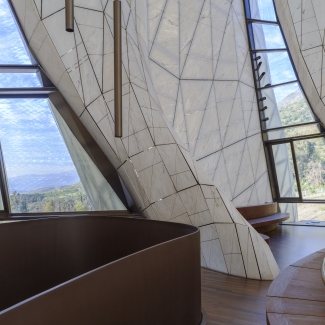
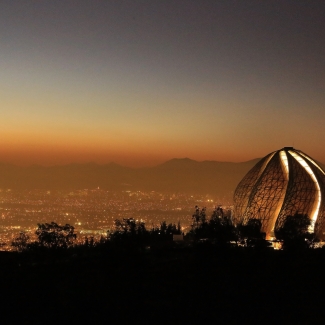
“The project illustrates the award’s complete complement of innovations in science, practice, and art to support a highly resolved architectural form.”
“The assembly of an international and local team of suppliers, consultants and fabricators demonstrate how the profession is increasingly working in complex, globalized environments that demand a sophisticated use of evolving software, communication and fabrication software tools. “
“The successful resolution of a project of such extraordinary ambition establishes a legacy for future projects for the profession.”